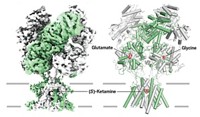Advertisement
Grab your lab coat. Let's get started
Welcome!
Welcome!
Create an account below to get 6 C&EN articles per month, receive newsletters and more - all free.
It seems this is your first time logging in online. Please enter the following information to continue.
As an ACS member you automatically get access to this site. All we need is few more details to create your reading experience.
Not you? Sign in with a different account.
Not you? Sign in with a different account.
ERROR 1
ERROR 1
ERROR 2
ERROR 2
ERROR 2
ERROR 2
ERROR 2
Password and Confirm password must match.
If you have an ACS member number, please enter it here so we can link this account to your membership. (optional)
ERROR 2
ACS values your privacy. By submitting your information, you are gaining access to C&EN and subscribing to our weekly newsletter. We use the information you provide to make your reading experience better, and we will never sell your data to third party members.
Pharmaceuticals
A new route to fast-acting antidepressants
Chemists design a pathway to ketamine analogs that could open the door to better drug treatments
by Tien Nguyen
September 25, 2017
| A version of this story appeared in
Volume 95, Issue 38
Ketamine is a drug that has been administered as an anesthetic for more than 50 years. A decade ago, scientists found that a small dose of ketamine can also serve as a fast-acting antidepressant. Then last year, researchers discovered that ketamine’s antidepressant activity comes from a metabolite, (2R,6R)-hydroxynorketamine (HNK), which lacks ketamine’s psychological side effects that increase its risk of being abused. In yet another ketamine development, a team led by E. J. Corey of Harvard University has now developed an enantioselective synthesis of HNK and related analogs that could help scientists determine the compound’s specific biological target and lead to new antidepressants (Org. Lett. 2017, DOI: 10.1021/acs.orglett.7b02498). The nine-step HNK synthesis contains two novel features. In one step, the team used a mechanistic model of the classic Jacobsen epoxidation reaction to design a modified manganese salen catalyst that enables the epoxidation of an intermediate. In another step, the researchers used aluminum- or titanium-based azide reagents to open the benzylic oxygen position of the epoxide with retention of stereochemical configuration instead of the typical inversion. HNK could be a promising drug candidate, Corey says, because as a ketamine metabolite it has already been encountered by thousands of people.





Join the conversation
Contact the reporter
Submit a Letter to the Editor for publication
Engage with us on Twitter